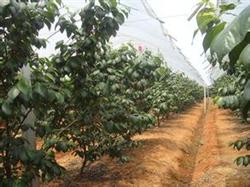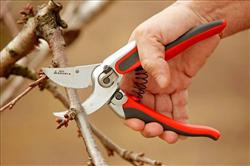Post-harvest management technology of Chinese chestnut
Chinese chestnut is planted in all parts of our country. After harvest, many growers ignore the chestnut trees and do not manage them in time, resulting in a serious decline in chestnut production in the coming year. At this time, because the chestnut began flower bud differentiation before harvest, and the tree was lack of nutrition after harvest, the quality of flower bud differentiation was poor, thus affecting the annual yield in the coming year. So how to manage Chinese chestnut after harvest? Let's take a look.

1. Apply basic fertilizer well
After fruit harvest, it is necessary to apply fertilizer in time to supplement the nutrients consumed by the tree, so that it can quickly restore the tree potential, enhance the photosynthetic capacity of leaves, have sufficient nutrients for flower bud differentiation, and the application of base fertilizer can also improve the cold resistance of plants in winter. Generally speaking, for every 100 jin of Chinese chestnut, it is necessary to consume 10-12 kg of nitrogen, phosphorus and potassium fertilizer, so the application of base fertilizer should be based on the yield of the plant and the age of the tree.
2. Watering to resist drought and survive the winter
After harvest, the water of the tree will be greatly lost, which makes the chestnut tree vulnerable to drought, resulting in withered branches and leaves, and in serious cases, the root system will dry up and die. Therefore, timely watering should be carried out after harvest, and watering should be thoroughly watered thoroughly. If the climate in the later period is relatively dry, watering and fertilization should be carried out together to speed up the decomposition and absorption of fertilizers. In addition, watering the overwintering water once before overwintering can improve the cold resistance of the plant and make it survive the winter safely.
3. Loose soil cover
After harvest, the soil in the canopy of Chinese chestnut should be turned deep once, and the soil can be fertilized after deep turning, so as to enhance the cold resistance of the plant. Before the cold wave comes, gather some soil and miscellaneous fertilizer around the plant, take the trunk as the center, lay it flat on the ground, and cover a layer of fine soil and branches and leaves, so that the low temperature can be increased and the roots will not be affected by low temperature. when the temperature picks up in the coming year, it will be dug up in time to increase permeability and reduce weeds.
4. Pest control
After harvest, the residual branches and leaves on the ground should be swept together in time, and then burned or buried deep in the ground, so as to provide nutrients for the plants, and the second is to eliminate the eggs and germs on the residual branches and leaves, so as not to harm the plants in the coming year. The main diseases and insect pests of Chinese chestnut after harvest are powdery mildew and tree cherry wasp, which will affect the tree potential and can be controlled by spraying thiophanate or chlorothalonil.
5. Reasonable pruning
After harvest, the plant can be pruned combined with fertilization, reasonable pruning can maintain the shape of the tree, coordinate the nutrition distribution of the plant, and prune off some dense branches, diseased branches and diseased leaves to reduce the harm of diseases and insect pests in the coming year. The pruned branches and leaves should be taken out of the garden and burned.
The above is the whole content of post-harvest management technology of Chinese chestnut. I hope it can help you. If you want to know more about chestnut planting, please follow us.
- Prev

Soil Management and Protection measures in Cherry Orchard
Although the root system of big cherry is well developed, it has no main root, only a large number of fibrous root and hairy root are distributed horizontally in the ground about 20cm to 30cm, so it is necessary to master the time and method of fertilization. Big cherries should be fertilized 3 or 4 times a year. The first fertilization should be completed within 10 days after the fruit is finished. The 40 after setting the fruit.
- Next

The solution of Cherry Leaf Curl
The main results are as follows: 1. The function of heart-picking is to control the vigorous growth of branches, increase the number of branches and branches, accelerate the expansion of tree crown, promote the transformation of branches to fruit-bearing branches, which is beneficial to early fruiting. Heart-picking time: first, early heart-picking, carried out 10 days after flowering, keeping about 10 cm of young shoots. It is good for control.
Related
- Moge, come on! The staff of the peasant association in the producing area of cantaloupe were frightened when the crowd gathered.
- Causes and Solutions of low Fruit setting rate of Apple
- Symptoms and control measures of passion fruit virus disease
- Fruit growing lesson: how do apple orchards keep high yields?
- Can you build orchards in the mountains? What are the pros and cons?
- How to manage the coloring period of Crisson grape?
- This paper introduces the processing technology of two kinds of fig products.
- How much is a month for retired teachers in rural areas by 2020?
- How can strawberry planting increase sugar content? We should pay attention to management in many aspects.
- What are the cultivation techniques on how to improve the yield of golden fruit?

